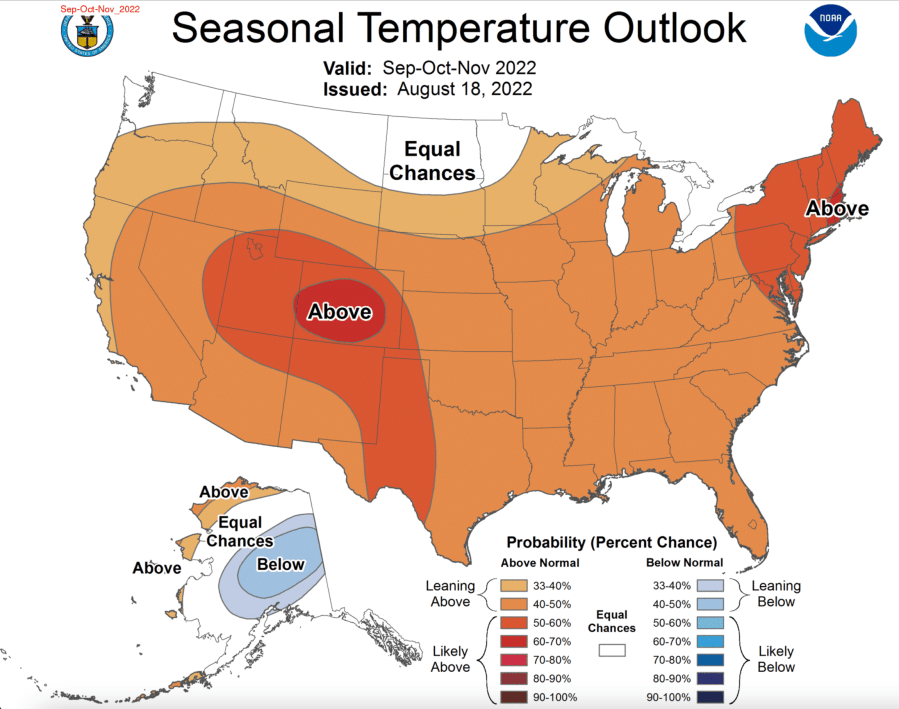91% chance La Niña impacts fall, National Weather Service says

(NEXSTAR) – Meteorologists are pretty confident the La Niña conditions we’ve seen all year are going to be with us at least a few months longer. There’s a 91% chance the La Niña conditions last from September to November, the National Weather Service’s Climate Prediction Center said in an update Thursday.
Those odds have strengthened since the meteorologists’ last update in August.
La Niña will mean less rain this fall for most of the country, according to a long-range outlook. From September through November, it’s set to be drier-than-normal across pretty much the entire central U.S.
The only slivers seeing above-average precipitation chances are corners of the Pacific Northwest and the Gulf states. That’s because La Niña years are also associated with stronger hurricanes, which can dump rain as they make landfall.
The Atlantic hurricane season has been pretty quiet so far, but the season last until the end of November. Hurricane Earl, which was approaching Bermuda Thursday, is expected to strengthen into a major hurricane, the New York Times reported. However, Earl’s projected path shows it moving away from the U.S.

When it comes to temperatures, it looks like this La Niña fall is set to be a hot one. Every state in the country, except for the most northern reaches that border Canada, is forecast to see above-average temperatures from September through November.
Colorado, Utah, Texas, New York Pennsylvania, New Jersey and the New England states have the highest chances of an unseasonably hot fall.

What happens after November is less certain. Current models have the odds of a La Niña at about 50%.
If it does happen, it’ll be the third La Niña winter in a row – a rare phenomenon we’ve only seen twice since 1950.
A third consecutive La Niña year would be harshest out West in states already suffering a bad drought. Places like California get most of their rain in the winter, and a La Niña winter could bring drier conditions to much of the state.
“Here in the Washington, D.C. area, it generally rains all year round. So if we have a couple of dry months, it’s OK because we can make it up another time,” Mike Halpert, deputy director of the Climate Prediction Center, explained. “When you’re in California and the Southwest, 90% of the rain falls in that fairly short winter and spring season. So if you miss that, you’re not going to make that up when you get into the summertime.”
A La Niña winter likely means less rain or snow for the whole Southern half of the country, from the southwest through Texas, the Gulf and Florida.
Copyright 2023 Nexstar Media Inc. All rights reserved. This material may not be published, broadcast, rewritten, or redistributed.

